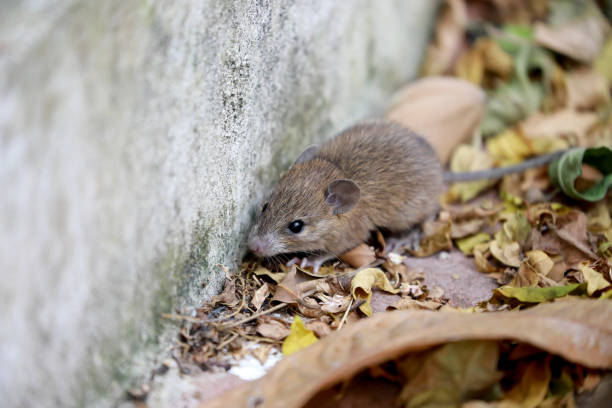White-Footed Mouse FactsThe white-footed mouse is a nocturnal and omnivorous animal that feeds on seeds, nuts, berries, insects, fungi, and occasionally small vertebrates. It has a keen sense of smell that helps it locate food and mates. It can also communicate with other mice using vocalizations, scent marking, and body postures. The white-footed mouse is an agile climber, jumper, and swimmer, and can use its tail for balance. It prefers to live in wooded areas, but can also adapt to grasslands, marshes, and urban environments. It nests in hollow trees, brush piles, abandoned bird nests, or burrows under the roots of shrubs. The nest is made of twigs, leaves, and soft materials, such as fur, hair, or cloth.
The white-footed mouse is a prolific breeder that can have up to four litters per year, with an average of four to five young per litter. The breeding season varies depending on the climate, but usually occurs from March to October. The gestation period is about 23 days, and the young are born blind, naked, and helpless. They open their eyes at about 12 days of age, and are weaned at about 18 days. They reach sexual maturity at about 44 days, and can live up to two years in the wild, or several years in captivity.
The white-footed mouse is an important prey item for many predators, such as owls, hawks, snakes, foxes, coyotes, and cats. It is also a reservoir host for several pathogens, such as the Lyme disease bacterium (Borrelia burgdorferi), the Hantavirus, and the Powassan virus. These diseases can be transmitted to humans or other animals through the bite of infected ticks or contact with mouse urine, feces, or saliva. Therefore, it is advisable to avoid handling or disturbing white-footed mice or their nests, and to take precautions against tick bites.
White-Footed Mouse InfestationWhite-footed mice can become pests when they invade homes and buildings in search of food, shelter, and nesting sites. They can cause damage to insulation, wiring, woodwork, food packaging, and furniture by gnawing, nesting, and defecating. They can also contaminate food and water sources with their droppings and urine, which can harbor harmful bacteria and viruses. Furthermore, they can bring in parasites, such as fleas, ticks, and mites, that can infest humans or pets.
To prevent or control white-footed mouse infestations, it is important to seal any cracks or gaps that can allow the rodents to enter the structure. This includes areas around doors, windows, pipes, vents, and foundations. It is also advisable to remove any potential food sources, such as bird feeders, pet food, garbage, or compost, or store them in sealed containers. Additionally, it is recommended to eliminate any clutter or debris that can provide hiding places or nesting materials for the mice, such as cardboard boxes, newspapers, or fabrics. Finally, it is essential to use appropriate traps or baits to capture or kill the mice, and to dispose of them safely and promptly. However, since these methods can be hazardous or ineffective if not done properly, it is best to contact a professional pest control service that has the expertise and equipment to deal with white-footed mouse infestations safely and efficiently.
When to call an white footed mice exterminator ?The best is to call us as soon as possible. We service the Greater Toronto Area, call us now 647 849 4441
Call us today to speak with our experienced white footed mouse exterminator
White Footed Mouse
PEST CONTROL
GTA Exterminators for white footed mice removal in Toronto
Call us today for white footed mice extermination


